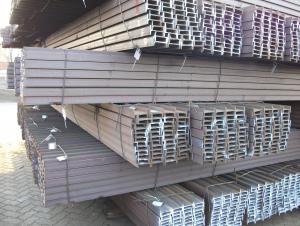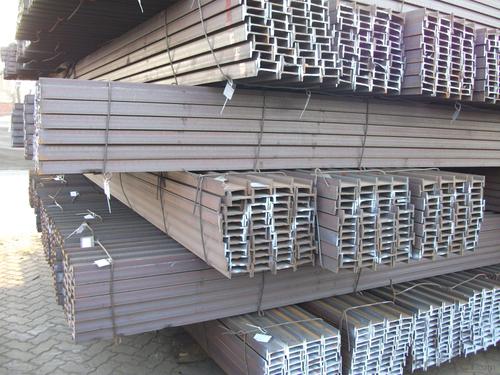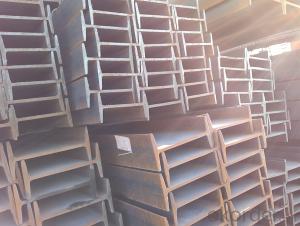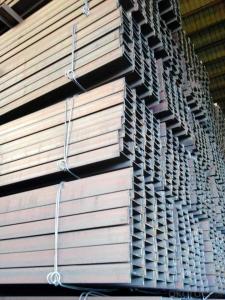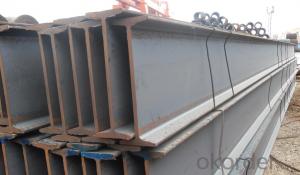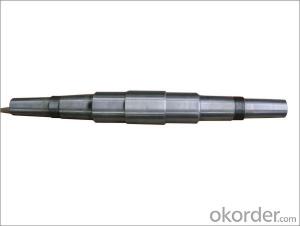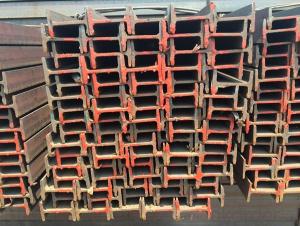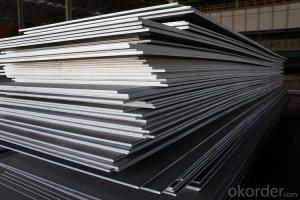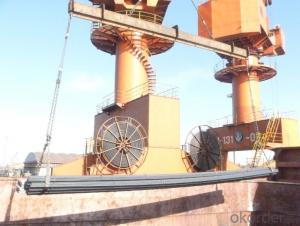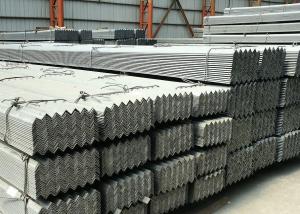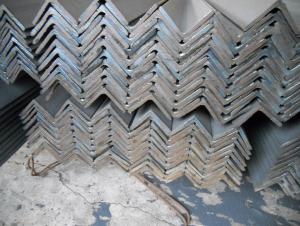Hot Rolled IPEAA Beam High Quality EN Quality
- Loading Port:
- China Main Port
- Payment Terms:
- TT or LC
- Min Order Qty:
- -
- Supply Capability:
- -
OKorder Service Pledge
OKorder Financial Service
You Might Also Like
Product Applications:
1. structure construction and electronic tower building construction
2. bridge, trestle, autos, brackets, machinery
3.It is widely used in various building structures and engineering structures such as roof beams, bridges, transmission towers, hoisting machinery and transport machinery, ships, industrial furnaces, reaction tower, container frame and warehouse etc.
.
Product Advantages:
OKorder's IPEAA Beam are durable, strong, and resist corrosion.
Main Product Features:
· Premium quality
· Prompt delivery & seaworthy packing (30 days after receiving deposit)
· Corrosion resistance
· Can be recycled and reused
· Mill test certification
· Professional Service
· Competitive pricing
Product Specifications:
1.Standard: EN10025, GB Standard, ASTM
2.Grade: Q235B, Q345B, SS400, ASTM A36, S235JR, S275JR
Alloy No. | Grade | C | Mn | S | P | Si |
Q235 | B | 0.12%-0.20% | 0.3%-0.7% | <=0.045% | <=0.045% | <=0.3% |
3.Length: 5.8M, 6M, 9M, 12M or as the requriements of the customers
4.Sizes: 80mm-200mm
Dimensions | |||||
h | b | s | t | Mass Kg/m | |
IPEAA80 | 80 | 46 | 3.20 | 4.20 | 4.95 |
IPEAA100 | 100 | 55 | 3.60 | 4.50 | 6.72 |
IPEAA120 | 120 | 64 | 3.80 | 4.80 | 8.36 |
IPEAA140 | 140 | 73 | 3.80 | 5.20 | 10.05 |
IPEAA160 | 160 | 82 | 4.00 | 5.60 | 12.31 |
IPEAA180 | 180 | 91 | 4.30 | 6.50 | 15.40 |
IPEAA200 | 200 | 100 | 4.50 | 6.70 | 17.95 |
Package & Delivery Terms of IPEAA Beam
1. Packing: it is nude packed in bundles by steel wire rod
2. Bundle weight: not more than 3.5MT for bulk vessel; less than 3 MT for container load
3. Marks:
Color marking: There will be color marking on both end of the bundle for the cargo delivered by bulk vessel. That makes it easily to distinguish at the destination port.
Tag mark: there will be tag mark tied up on the bundles. The information usually including supplier logo and name, product name, made in China, shipping marks and other information request by the customer.
FAQ:
Q1: Why buy Materials & Equipment from OKorder.com?
A1: All products offered byOKorder.com are carefully selected from China's most reliable manufacturing enterprises. Through its ISO certifications, OKorder.com adheres to the highest standards and a commitment to supply chain safety and customer satisfaction.
Q2: How do we guarantee the quality of our products?
A2: We have established an advanced quality management system which conducts strict quality tests at every step, from raw materials to the final product. At the same time, we provide extensive follow-up service assurances as required.
Q3: Can stainless steel rust?
A3: Stainless does not "rust" as you think of regular steel rusting with a red oxide on the surface that flakes off. If you see red rust it is probably due to some iron particles that have contaminated the surface of the stainless steel and it is these iron particles that are rusting. Look at the source of the rusting and see if you can remove it from the surface.
Images:
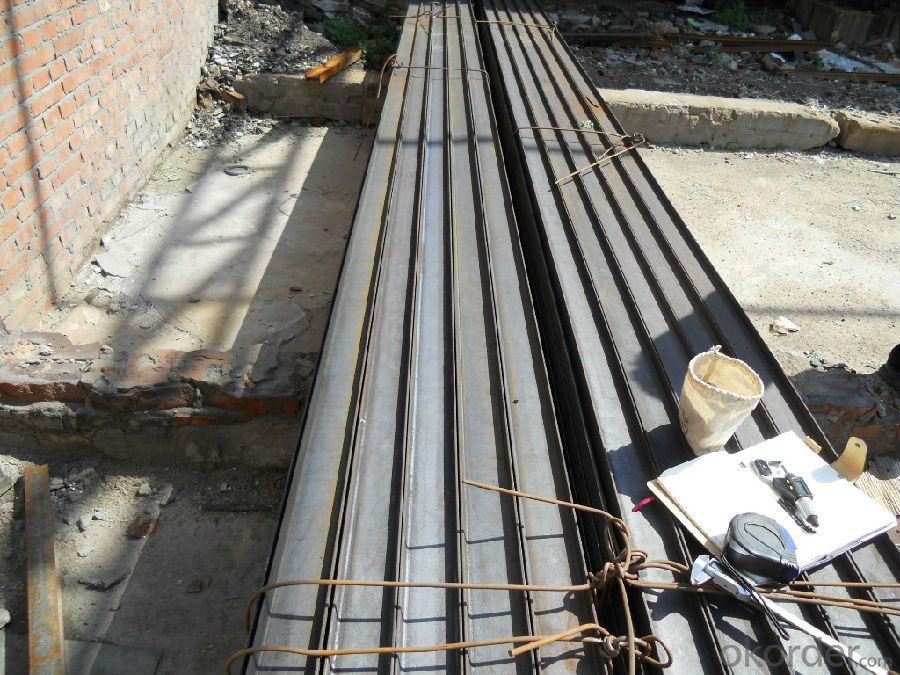
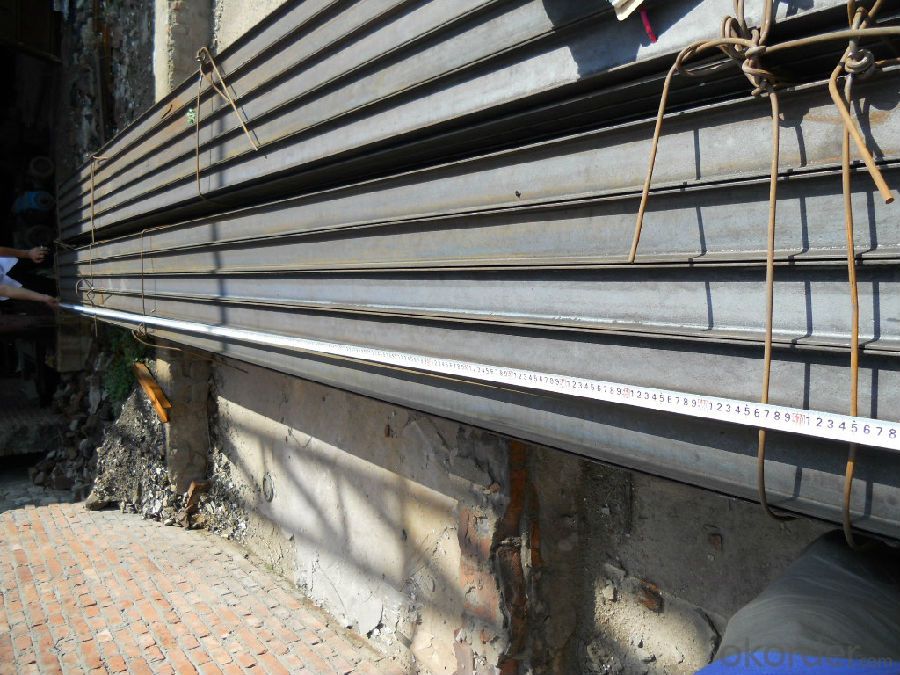
- Q: Are steel angles suitable for outdoor furniture?
- Yes, steel angles are suitable for outdoor furniture. Steel is a durable and strong material that can withstand various weather conditions, making it an excellent choice for outdoor furniture. Steel angles provide stability and structural support, ensuring that the furniture can withstand heavy loads and remain sturdy. Additionally, steel is resistant to rust and corrosion when properly treated, which is essential for outdoor furniture exposed to moisture and changing weather. Steel angles also offer a sleek and modern aesthetic, allowing for versatile design options for outdoor furniture. Overall, steel angles are a reliable and long-lasting choice for outdoor furniture due to their durability, strength, and resistance to environmental elements.
- Q: What are the tolerance specifications for steel angles?
- The tolerance specifications for steel angles can vary depending on the specific standards and requirements set by different organizations and industries. However, in general, the tolerance specifications for steel angles typically include measurements for dimensions such as leg length, thickness, and straightness. Leg length tolerance refers to the allowable deviation from the specified leg length of the angle. This tolerance ensures that the angle's legs are within an acceptable range of the desired measurement. For example, a tolerance specification of ±1/8 inch means that the leg length can deviate by up to 1/8 inch in either direction from the specified dimension. Thickness tolerance indicates the permissible deviation in the thickness of the steel angle. This specification ensures that the thickness is consistent and within an acceptable range. It is typically expressed as a percentage or an absolute value. For instance, a tolerance specification of ±10% means that the thickness can deviate by up to 10% above or below the specified dimension. Straightness tolerance ensures that the steel angle is not bent or twisted and meets the required straightness criteria. It is usually measured by the maximum allowable deviation from the straight line. This tolerance specification guarantees that the angle can be easily fitted and aligned during construction or manufacturing processes. It is important to note that the specific tolerance specifications for steel angles may vary depending on the intended application, industry standards, and regulatory requirements. Therefore, it is recommended to refer to the relevant standards, codes, or specifications provided by the manufacturer, industry associations, or governing bodies for accurate and up-to-date information on the tolerance specifications for steel angles.
- Q: Are steel angles suitable for earthquake-resistant construction?
- Steel angles can indeed be suitable for earthquake-resistant construction. Steel is a material known for its high strength and ductility, making it ideal for withstanding seismic forces. Steel angles, in particular, are commonly used in seismic design and construction due to their ability to provide structural stability. Steel angles are often used as bracing elements in buildings to resist lateral forces caused by earthquakes. They can be installed diagonally between structural members to create a rigid frame that can effectively absorb and dissipate seismic energy. These angles help distribute the forces generated during an earthquake and prevent the collapse of the structure. Furthermore, steel angles can be designed and fabricated to meet specific seismic design criteria. The design can take into account factors such as the building's location, expected seismic activity, and the desired level of earthquake resistance. By using advanced computer-aided design and analysis tools, engineers can optimize the placement and size of steel angles to enhance the overall seismic performance of the structure. In addition to their strength and ductility, steel angles offer other advantages for earthquake-resistant construction. They are lightweight, which reduces the overall weight of the structure and allows for more efficient seismic design. Steel is also a recyclable material, making it a sustainable choice for construction projects. However, it is important to note that the suitability of steel angles for earthquake-resistant construction depends on several factors, including the specific design, construction techniques, and adherence to building codes and regulations. Professional engineering expertise and thorough analysis are necessary to ensure the appropriate use of steel angles in seismic design. In summary, steel angles are suitable for earthquake-resistant construction due to their strength, ductility, and ability to provide structural stability. When properly designed and installed, they can effectively resist seismic forces and contribute to the overall safety and resilience of the structure.
- Q: Can steel angles be used in outdoor or exposed applications?
- Yes, steel angles can be used in outdoor or exposed applications. Steel is a highly durable and weather-resistant material, making steel angles suitable for withstanding outdoor conditions. Additionally, steel angles can be treated or coated to provide further protection against rust and corrosion, making them a reliable choice for outdoor and exposed applications.
- Q: Are there any specific design considerations when using steel angles?
- Yes, there are several specific design considerations when using steel angles. These include determining the appropriate size and thickness of the angle to ensure structural stability and load-bearing capacity, considering the angle's orientation and connection details for proper installation, and accounting for any potential deflection or buckling issues that may arise due to the long and slender nature of angles. Additionally, it is important to consider the corrosion resistance of steel angles in certain environments and to select the appropriate coatings or treatments to mitigate this potential issue.
- Q: Do steel angles come with any warranties?
- Yes, steel angles typically come with warranties. The specific warranty terms may vary depending on the manufacturer or supplier. However, most reputable companies offer warranties to ensure the quality and performance of their steel angles. These warranties typically cover defects in materials or workmanship and may range from a few months to several years. It is advisable to check the warranty terms and conditions provided by the manufacturer or supplier before purchasing steel angles to understand the extent and duration of the warranty coverage.
- Q: Can steel angles be used for roof trusses?
- Indeed, roof trusses can be constructed using steel angles. These angles are frequently employed in the field of construction due to their robustness and resilience. By means of simple fabrication and installation, they can effectively establish the structure of roof trusses. Steel angles offer exceptional support and stability, rendering them appropriate for diverse roofing endeavors. Moreover, these angles possess the ability to endure substantial loads and unfavorable weather circumstances, thereby solidifying their reputation as a dependable option for roof trusses.
- Q: What are the maintenance requirements for steel angles?
- The maintenance requirements for steel angles typically involve regular cleaning and inspection for signs of corrosion or damage. It is important to remove any dirt or debris that may accumulate on the surface of the steel angles, as they can potentially lead to corrosion. Additionally, it is advisable to apply a protective coating or paint to prevent rusting. Routine inspections should be conducted to identify any signs of wear or structural issues that may require repairs or replacements.
- Q: What is the minimum length of a steel angle?
- The specific requirements and applications can cause variations in the minimum length of a steel angle. Standard lengths for steel angles usually range from 20 to 40 feet. Nevertheless, it is feasible to shorten steel angles if necessary. The minimum length of a steel angle ultimately relies on project specifications, structural necessities, and the capabilities of the supplier. To establish the minimum length required for a particular application, it is advisable to seek guidance from a steel supplier or a structural engineer.
- Q: How do you determine the required angle length for a specific application?
- To determine the required angle length for a specific application, there are several factors that need to be considered. Firstly, the purpose of the angle in the application needs to be identified. Is it going to be used for structural support, bracing, or as a decorative element? This will help determine the level of strength and stability required, which in turn will influence the length of the angle. Next, the load or weight that the angle needs to bear should be assessed. Understanding the amount of force or pressure that will be applied to the angle will help determine the appropriate length. A heavier load may require a longer angle to distribute the weight effectively and prevent any bending or failure. The material of the angle is another important consideration. Different materials have varying levels of strength and durability. For example, steel angles are stronger than aluminum angles. The material's properties, such as tensile strength and resistance to corrosion, will impact the length required for the specific application. Additionally, the specific geometry and configuration of the application should be taken into account. Factors such as the overall dimensions, desired angle of inclination, and any additional supports or attachments need to be considered. These factors may influence the length needed to ensure proper fit, function, and stability. Finally, industry standards and regulations should be consulted to ensure compliance and safety. Certain applications may have specific guidelines for the length of angles to be used, especially in fields like construction or engineering. Overall, determining the required angle length for a specific application requires a comprehensive analysis of the purpose, load, material, geometry, and relevant standards. Consulting with experts or engineers in the field can also provide valuable insights and guidance.
Send your message to us
Hot Rolled IPEAA Beam High Quality EN Quality
- Loading Port:
- China Main Port
- Payment Terms:
- TT or LC
- Min Order Qty:
- -
- Supply Capability:
- -
OKorder Service Pledge
OKorder Financial Service
Similar products
Hot products
Hot Searches
Related keywords
